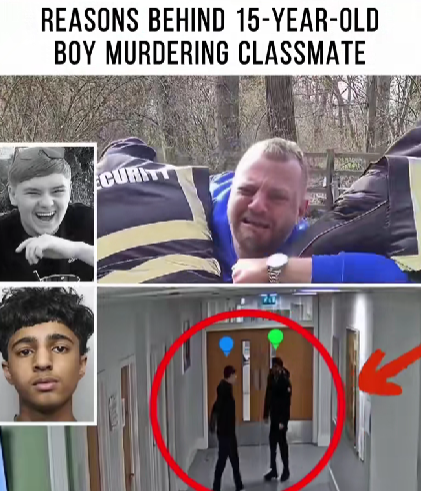A recent tragedy involving two teenage classmates has reignited discussions about youth aggression, social pressure, and mental health among adolescents. What was once dismissed as harmless rivalry between classmates turned into an irreversible act of violence — one that has left parents, teachers, and communities searching for answers.
Experts say that while such cases may seem sudden, they are often the result of long-term emotional buildup, bullying, or feelings of exclusion that go unaddressed. Teenagers today face a perfect storm of challenges — from social media pressure and academic competition to emotional neglect and mental health stigma.
“In many violent cases involving youth, there’s a visible pattern,” explained Dr. Emily Carter, a child psychologist specializing in adolescent behavior. “You see isolation, resentment, and an overwhelming need to feel powerful or respected. These feelings, when combined with poor emotional regulation, can explode in devastating ways.”
Teachers and peers often notice early warning signs — sudden withdrawal, obsessive anger toward a classmate, or alarming social media posts — but they might not know how to respond. In many schools, counseling programs are underfunded or stretched too thin to intervene effectively.
The growing influence of online platforms has also complicated things. Conflicts that once ended in the classroom now continue online, where insults and rumors can escalate rapidly. “Digital aggression can intensify real-world anger,” said Dr. Carter. “When humiliation becomes public, it can push vulnerable teens over the edge.”
In the aftermath of this tragedy, parents are being urged to take a more proactive role in their children’s emotional lives. That means listening — really listening — even when the conversation feels uncomfortable. “If your child seems angry, withdrawn, or obsessed with someone they dislike, that’s not ‘just teenage behavior,’” said school counselor Marcus Nguyen. “It could be a red flag.”
Schools across the country are now re-evaluating their safety protocols and investing in conflict resolution programs, empathy training, and peer support groups designed to reduce tension before it spirals out of control. Many educators believe that if students are taught emotional awareness early — how to manage frustration, ask for help, and understand others’ perspectives — the cycle of violence can be broken.
The tragedy has also prompted a discussion about mental health accessibility. In many regions, teens still face long waiting lists for therapy or feel stigmatized for seeking help. “We can’t expect children to process adult-sized emotions without support,” Dr. Carter added. “Empathy must start at home and continue in schools.”
While the pain of this event will never fade completely, it serves as a wake-up call to communities everywhere. The lesson is painfully clear: ignoring emotional suffering in young people can have fatal consequences.
The best way to honor the lives affected is by creating safer environments — where every teen feels heard, supported, and valued. Because prevention doesn’t begin in the courtroom; it begins in the classroom, the home, and the heart.
